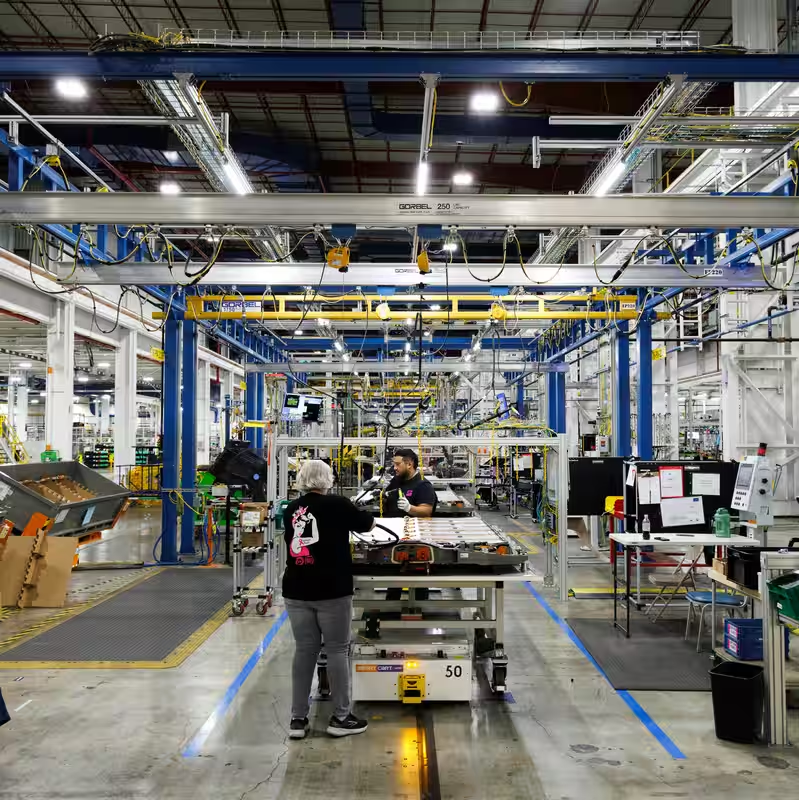G.M. Unveils Talking Cars and Cheaper EV Batteries
General Motors just dropped a tech bombshell that could reshape how we interact with our vehicles. At a high-profile event in New York on October 22, 2025, CEO Mary T. Barra unveiled a suite of next-generation innovations—including AI-powered talking cars, significantly cheaper EV batteries, and advanced self-driving capabilities.
The announcements signal G.M.’s aggressive push to compete not only with Tesla but also with fast-rising Chinese EV makers like BYD. “Together, these innovations signify a fundamental shift in G.M.’s evolution,” the company declared in a press statement.
What Are Talking Cars?
At the heart of G.M.’s new vision is an artificial intelligence assistant that lets drivers hold natural, conversational interactions with their vehicles. Unlike today’s rigid voice commands (“Call Mom” or “Navigate home”), this new AI understands context, remembers preferences, and even offers proactive suggestions.
Imagine saying, “I’m feeling tired—find the nearest rest stop with good coffee,” and your car not only reroutes but also pre-orders your favorite drink via a connected app. That’s the kind of seamless experience G.M. is aiming for.
Self-Driving Gets Smarter—and Safer
G.M. also announced upgrades to its self-driving software that will allow drivers to take their eyes off the road in certain controlled environments—like highways with clear lane markings and low traffic complexity. The system uses a combination of lidar, radar, and high-definition cameras, backed by real-time cloud-based mapping.
Crucially, the company emphasized that safety remains paramount. “This isn’t full autonomy,” clarified a G.M. engineer during the demo. “It’s about reducing cognitive load during long drives while keeping the driver in the loop.”
Cheaper Batteries = More Affordable EVs
Perhaps the most impactful news for everyday consumers is G.M.’s breakthrough in battery technology. The automaker revealed a new lithium-ion cell design that cuts production costs by up to 30% without sacrificing range or performance.
This could finally bring mass-market electric vehicles under the $30,000 price point—a milestone many industry watchers say is essential for widespread EV adoption in the U.S.
How G.M.’s New Tech Stacks Up
| Feature | G.M. (2025) | Tesla (Current) | BYD (Current) |
|---|---|---|---|
| Conversational AI | ✅ Full natural language | ❌ Limited voice commands | ❌ Basic assistant |
| Hands-Free Driving | ✅ Highway-only (eyes off road) | ✅ Autopilot (eyes on road) | ❌ Not available in U.S. |
| Battery Cost Reduction | ✅ 30% cheaper cells | ✅ 20% via 4680 cells | ✅ Vertical integration |
| Target EV Price | ✅ Under $30K by 2026 | ❌ Starts at $38K | ❌ Not sold widely in U.S. |
Why This Matters for American Drivers
With EV adoption stalling in parts of the U.S. due to high costs and range anxiety, G.M.’s dual focus on affordability and user experience could be a game-changer. The talking AI alone may appeal to older drivers or tech-curious commuters who’ve been hesitant to switch from gas-powered vehicles.
Moreover, by bringing more advanced driver-assist features to mainstream models—not just luxury trims—G.M. is democratizing access to cutting-edge automotive tech.
What’s Next?
G.M. plans to roll out these features starting in late 2026 across its Chevrolet, GMC, and Cadillac EV lines. The company also hinted at deeper integration with smart home ecosystems, suggesting your car could one day sync with your thermostat, lights, and security system.
As Mary Barra put it: “We’re not just building cars. We’re building intelligent companions for the road ahead.”




